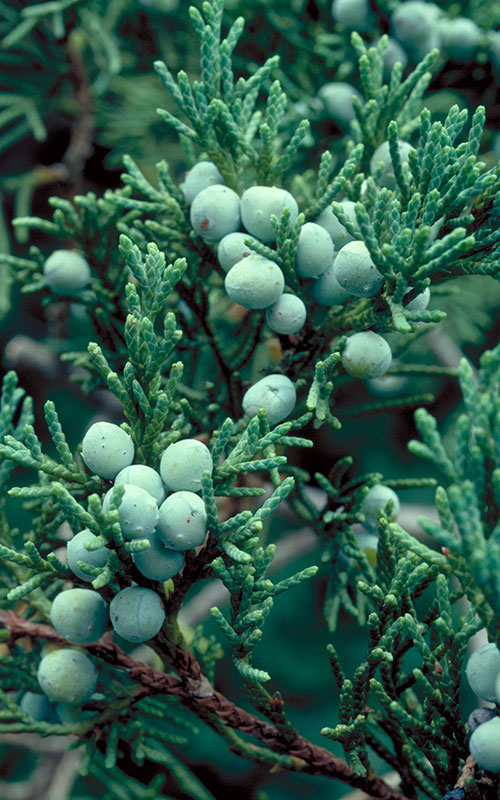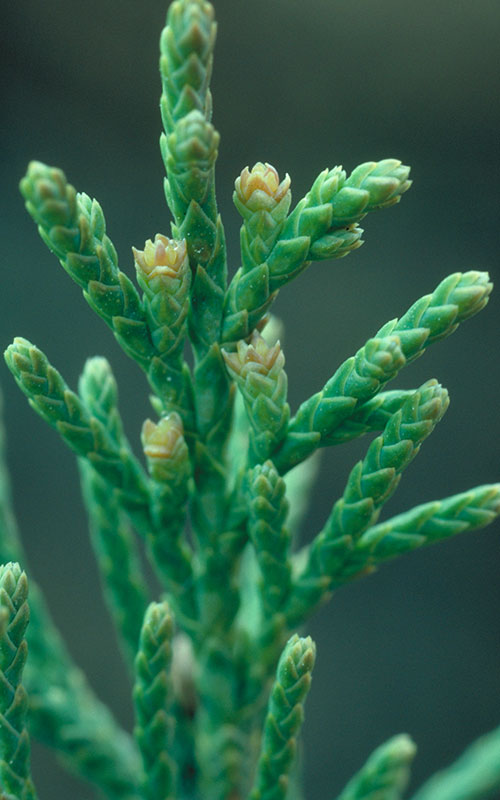Eastern Red Cedar/Juniper
(Juniperus virginiana)
Description
-
An evergreen tree with scaley leaves and reddish bark.
-
Male cones are small yellowish and round, about the size of a sesame seed. Female cones (also called “berries”) are blue/purple, about the size of a pea.
-
It grows up to 50 feet tall in good habitat but can be small and grow low to the ground in poor-quality habitat.
Habitat
-
Dry and rocky soil, rocky ledges, and open areas on river bluffs and hillsides.
-
Cannot grow in shade.
Range
-
The eastern US and the Midwest and eastern Canada.
-
The range in Minnesota includes the southern part of the state.
History
-
It is a sacred tree to many Native American tribes and is part of ritual ceremonies.
-
Native American tribes used the cones and roots for medicine and the wood for building.
-
The tree is a resting place for many species, including migrating Northern Saw-whet Owls, Dark-eyed Juncos, and Yellow-rumped Warblers
-
Many animals eat the berries, including Cedar Waxwings (which are named after the tree), American Turkeys, and White-tailed Deer.
Current use
-
The tree is still used medicinally for issues including digestion and joint pain.
-
It is used for woodworking. The wood is soft and is used for interiors, like the inside of closets, and used to be used for lead pencils (MNDNR).
-
The scent of the crushed berries is used for fragrances in candles and soap.
-
The berries can be eaten fresh or dried in moderation. However, similar European species that have been introduced to the US have toxic cones.
Mission
-
Can you find both a male and a female eastern red cedar tree?
-
How tall are the eastern red cedar trees you found? What does the size of the tree tell you about the habitat it is in?
Photo Reprinted with Permission, Minnesota Department of Natural Resources
This page was created by a Master Naturalist volunteer. The Minnesota Master Naturalist program is sponsored by University of Minnesota Extension.





